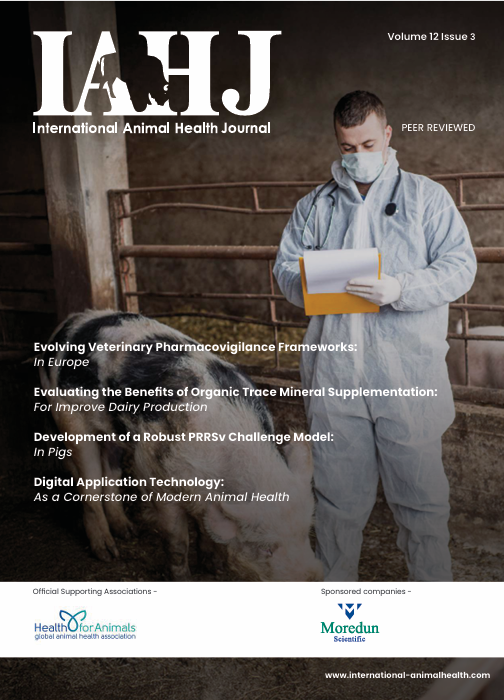Porcine Reproductive and Respiratory Syndrome (PRRS) is considered one of the most relevant diseases in pig production worldwide and is caused by the PRRS virus (PRRSv). Two major PRRSv species are known, formerly defined as genotypes: PRRSv-1, defined as the European genotype and PRRSv-2, defined as North American (Wannarat et al., 2025). Currently, most pig herds in major producing countries are endemically infected with PRRSv. Affected herds are impacted by reproductive failure in sows, respiratory signs in piglets and deprivation of the immune system. The disease does not only impact the health of swine herds but also leads to substantial economic losses and increased use of antibiotics due to secondary infections including those caused by influenza A virus, Mycoplasma hyopneumoniae, Actinobacillus pleuropneumoniae and Streptococcus suis.
PRRSv may spread via direct contact with infected pigs, semen, or indirectly via the air or contaminated fomites (e.g. clothes, equipment, vehicles). Control of PRRSv is often based on improvement measures at a farm site to limit the direct and indirect spread of the virus. Examples are redesign and reorganisation of the farm and farming processes, such as limiting contact between different animal age groups and implementation of adequate hygiene management measures. However, other aspects, such as proper monitoring programs, diagnostics and vaccination, are also key in the control of PRRSv. Since their introduction in the market, PRRSv vaccines are widely used to induce immunity and reduce virus circulation. Although their efficacy is supported by scientific publications and practical experience, efficacy is compromised by several factors such as flaws in farm management or biosecurity. Therefore, despite the extended use of PRRSv vaccines, there are still many outbreaks occurring in both vaccinated and unvaccinated pig farms around the world. Still, vaccines are considered essential to stabilise the situation on a farm in case of a PRRSv-outbreak and to minimise losses and as such the need for development of new vaccines is high













